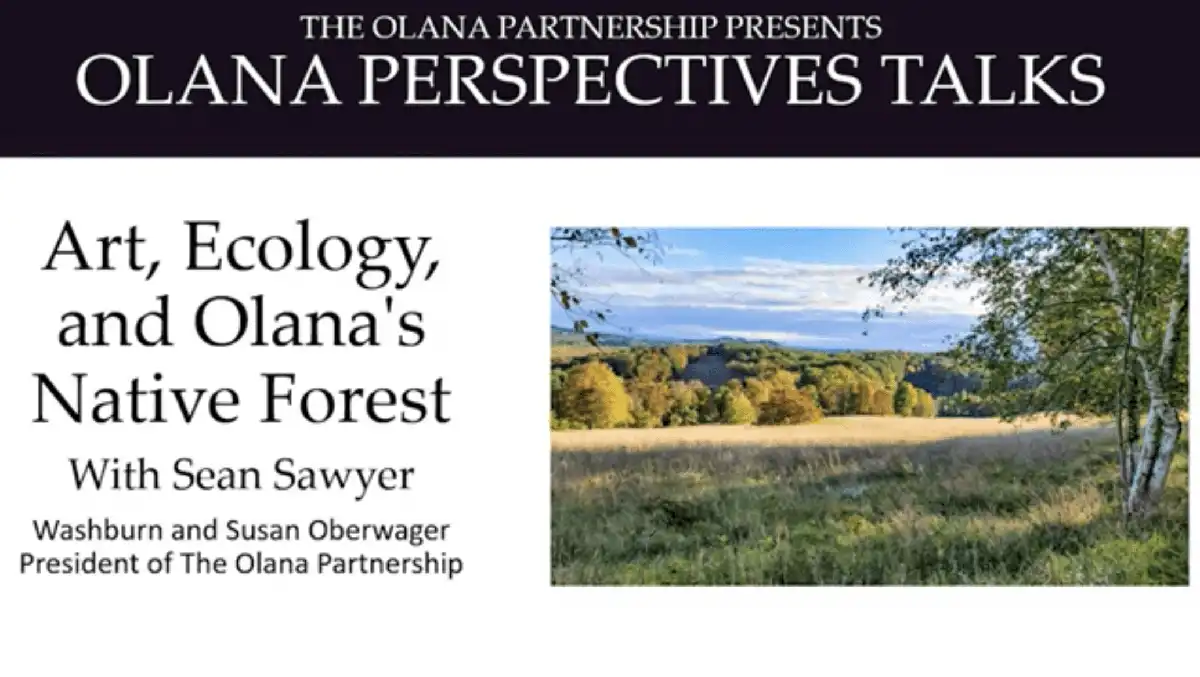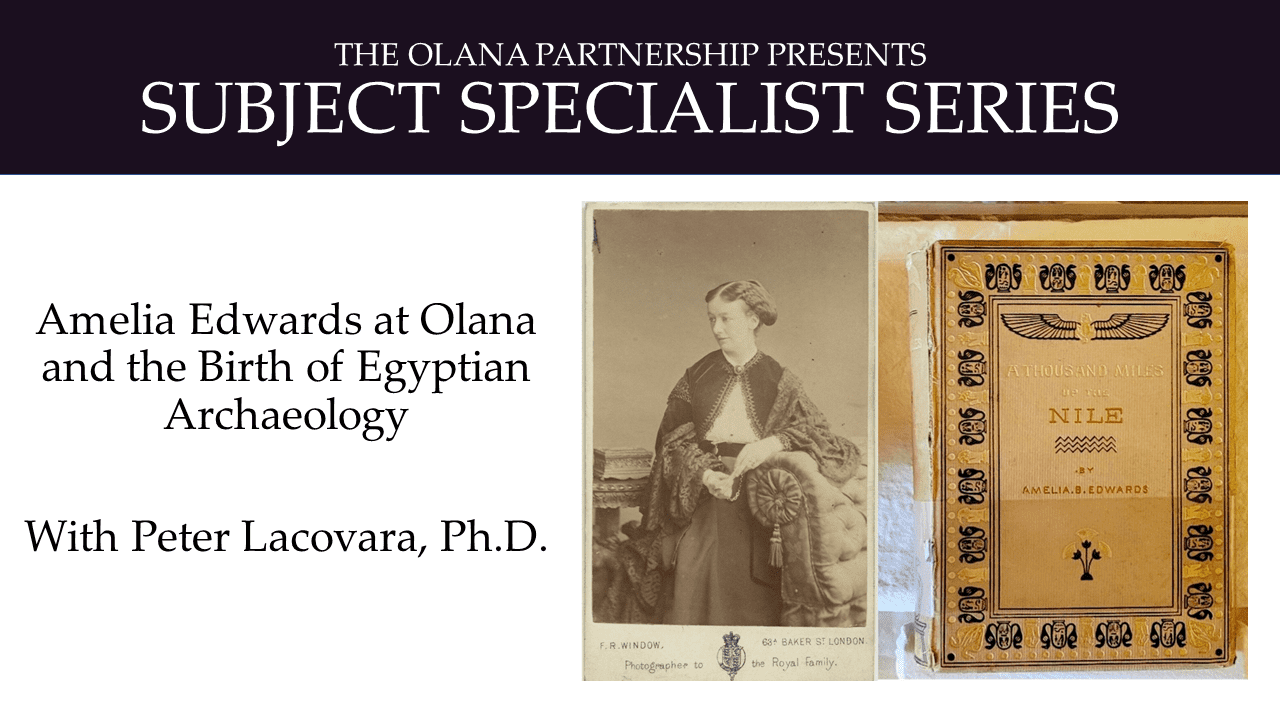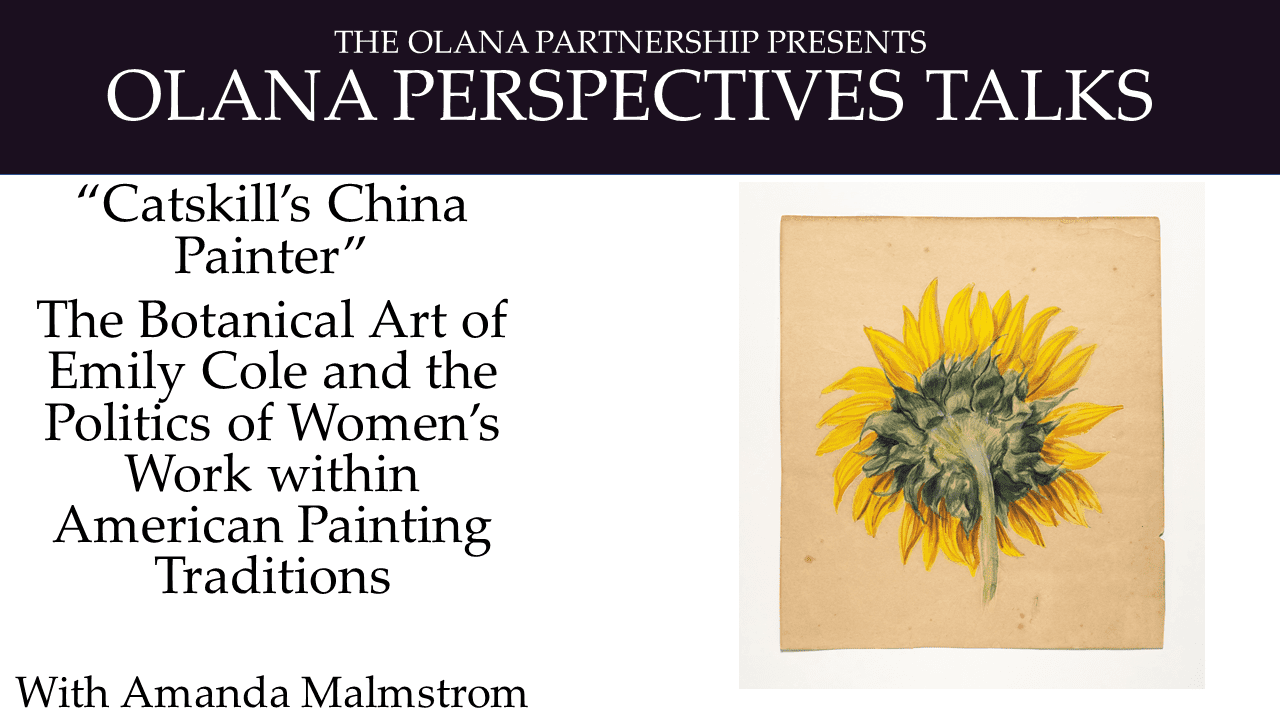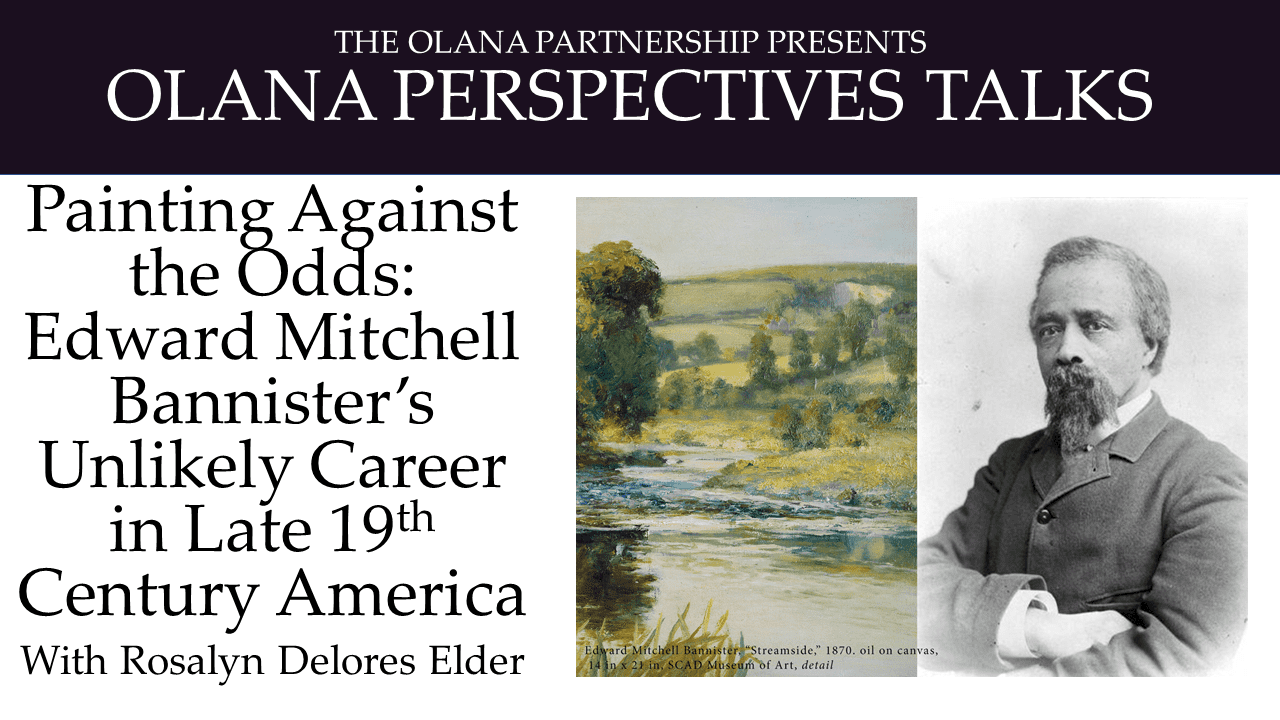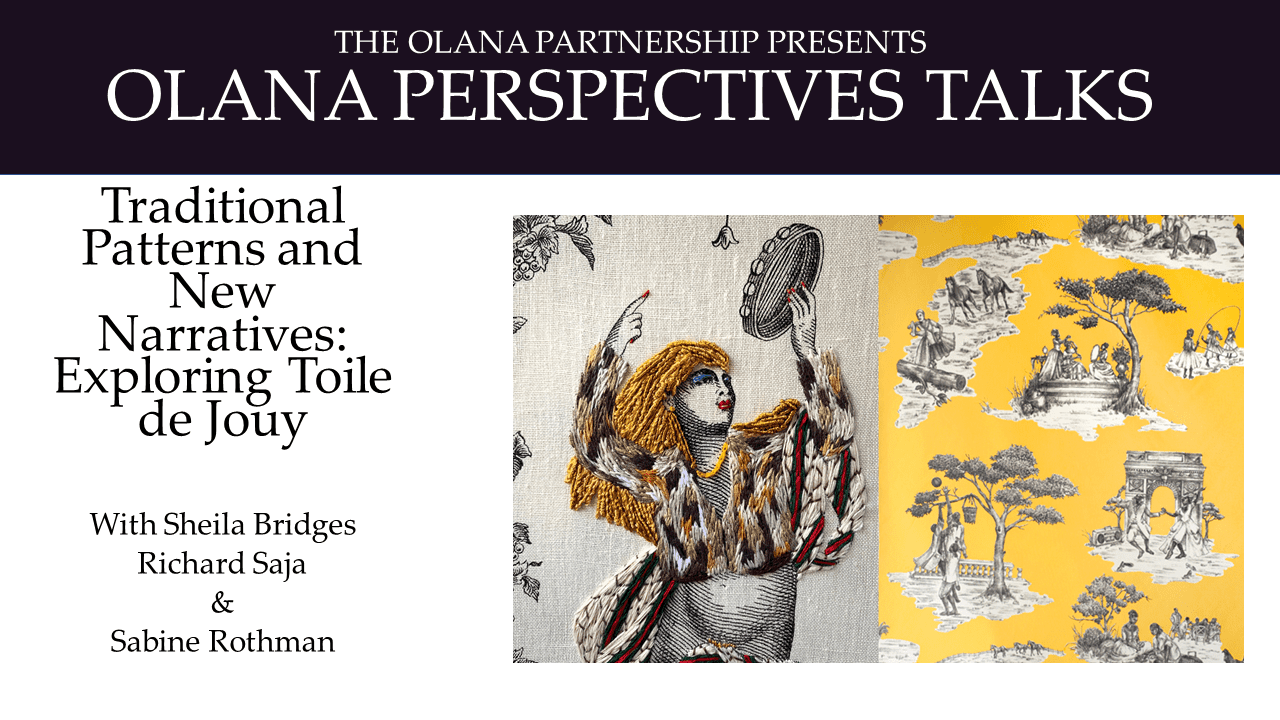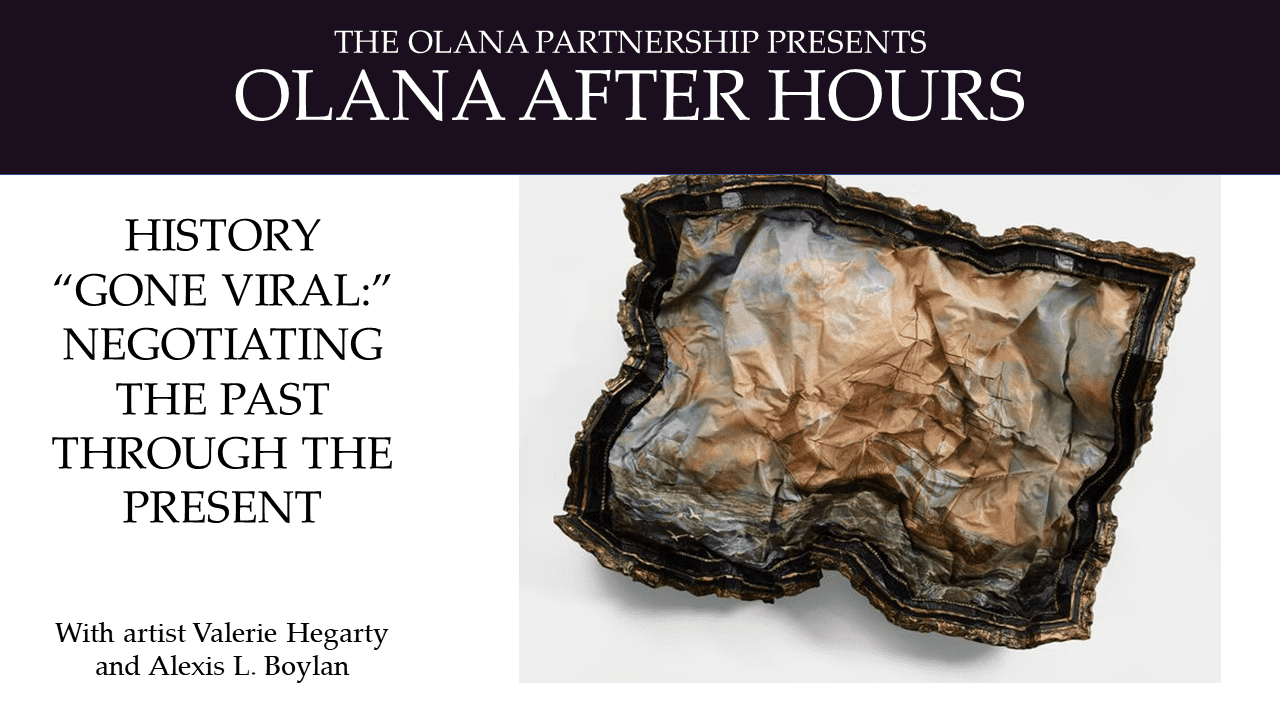Webinars
Art, Ecology, and Olana’s Native Forest
October 19, 2022
During this virtual webinar, Sean Sawyer, President of The Olana Partnership will discuss how Frederic Church engaged with the emerging field of ecology in the 19th century. By following in Alexander von Humboldt’s footsteps in his meteoric rise as the country’s most celebrated landscape painter and then in his four decade-long development of Olana, Church immersed himself in “landscape architecturing” to speak to the history of the land and human impact on it.
As a painter, Church defined our national identity as inextricably linked to the majesty of the natural world. At Olana, a National Historic Landmark and New York State Historic Site, Church sought to marry aesthetic endeavor and environmental action. At the core of this endeavor was the ambitious reforestation of 250-acres of overworked land with native trees. Learn more about the intersections of art and ecology latent in Olana’s history and designed landscape during this virtual presentation. Registration to this live webinar is free for members. This program will be recorded and available online.
Sean Sawyer has served as the Washburn & Susan Oberwager President of The Olana Partnership since May 2015. He received a B.A. summa cum laude in Art History & Archaeology from Princeton University in 1988 and his Ph.D. in Architectural History from Columbia University in 1999. Prior to joining Olana, Sean was the Executive Director of The Royal Oak Foundation, the American partner of the National Trust of England, Wales, and Northern Ireland. He began his non-profit career as Executive Director of the Wyckoff Farmhouse Museum in East Flatbush, Brooklyn.
Amelia Edwards at Olana and the Birth of Egyptian Archaeology
April 5, 2022
First published at the tender age of seven, Amelia Ann Blanford Edwards was a successful novelist and travel writer. In the winter of 1873 -1874, Edwards went to Egypt for the first time sailing up the Nile in a houseboat, visiting many of the most important sites, and documenting her travels. Her illustrated record of the trip, A Thousand Miles up the Nile, was published in 1877 and became a bestseller. The Churches’ own library at Olana housed this foundational work of Egyptology, along with along with 11 other copies of books by Edwards. Edwards’ lifelong efforts to preserve Egyptian monuments not only firmly planted her legacy in Egyptian studies but brought Edwards to Olana to stay with Frederic Church during a set of speaking tours in America in 1889-1890. During this webinar, Dr. Peter Lacovara will discuss Edwards’ important efforts as the “Godmother of Egyptology,” including her co-founding of the Egypt Exploration Fund which continues to set out annual expeditions to excavate, record and preserve archaeological sites throughout Egypt.
Peter Lacovara (B.A. 1976, Boston University; Ph.D. 1993 The Oriental Institute of the University of Chicago) is Director of The Ancient Egyptian Archaeology and Heritage Fund, Consulting Curator for the Egyptian Collection at the Albany Institute of History and Art, and Visiting Research Scholar at the American University in Cairo. He was Senior Curator of Ancient Egyptian, Nubian, and Near Eastern Art at the Michael C. Carlos Museum from 1998 to 2014. Previously, he has served as Assistant Curator in the Department of Ancient Egyptian, Nubian and Near Eastern Art at the Museum of Fine Arts, Boston. His publications include studies on Daily Life and Urbanism in Ancient Egypt, Egyptian Mortuary Traditions, and the Material Culture of Ancient Egypt and Nubia.
“Catskill’s China Painter:” The Botanical Art of Emily Cole and the Politics of Women’s Work within American Painting Traditions
March 15, 2022
Join Amanda Malmstrom (she/her), Associate Curator at the Thomas Cole National Historic Site, for this presentation exploring the life, work, and legacy of Emily Cole (1843-1913), a lifelong artist of botanicals and painted porcelain. Emily chose as her subject plants and their flowers, close-up and in isolation, celebrating the Catskill landscape through methods differing from that of Hudson River School painters like her father Thomas Cole, who depicted the sweeping, picturesque, and sublime vistas of landscapes. Emily Cole created an extensive oeuvre of works which she sold and exhibited in the Hudson Valley and New York City, where she also served as a charter member of the New York Society of Ceramic Arts in 1892. Through her presentation, Malmstrom will explore Emily Cole’s relationship with her family and lifelong home in Catskill, NY, and well as with the Church family residing across the river in Hudson, NY. Recent discoveries show that Frederic Church served as a mentor to Emily Cole while she was at art school, and Church’s daughter Isabel or “Downie” confided in Emily Cole as close friends and fellow botanical artists. Emily Cole’s life, art, and personal and professional circles provide a lens not only into American flower painting in the mid-19th and early 20th centuries, but a way to examine the social and political implications of women’s work during this period and as presented at historic sites and museums today.
Amanda Malmstrom (she/her) is Associate Curator at the Thomas Cole National Historic Site, where she first served as a Cole Fellow in 2018-2019. Her work and research at the Cole Site has centered on highlighting the lives and labor of women who called the historic site home and who painted in the Hudson River School.
Painting Against the Odds: Edward Mitchell Bannister’s Unlikely Career in Late 19th Century America
March 3, 2022
Edward Mitchell Bannister’s career as a successful practicing artist in New England during the late nineteenth century was considered normal. He accepted commissions, painted, socialized with his peers, and sailed his boat along the Narragansett Bay in his leisure time. But, as an African American artist living during the 19th century, the level of normalcy Edward Bannister experienced was, in fact, quite exceptional. Just ten years prior to Bannister’s winning a major art award at the Philadelphia Centennial Exposition in 1876, the United States had ended the bloodiest war it has ever fought—the Civil War—to end slavery in the US. During this webinar, Rosalyn Delores Elder will explore Bannister’s career and how his laser-focused determination foreshadowed his future success in the midst of exceptional circumstances. Elder is a registered architect, entrepreneur, author, and artist. She received her B.A. Degree in Art History from the University of Memphis, her M. Arch. Degree from the University of Washington, and her M. Arch. in Urban Design Degree from Harvard University. Ms. Elder recently authored Exploring the Legacy, a book on the contributions of African Americans to both our state’s history and our country’s history.
Traditional Patterns and New Narratives: Exploring Toile de Jouy
February 18, 2022
During this program, Sheila Bridges and Richard Saja will discuss the ways the legacy of toile has been altered, homaged, and expanded, moderated by journalist Sabine Rothman. As Sheila Bridges’ prominent toile series incorporates new and unexpected images into a toile motif—such as scenes reflecting Sheila Bridges’ African American heritage or images of Frederic Church painting a cell tower—Saja uses embroidery to create unexpected images out of traditional toile fabric. This lively moderated conversation will examine how a historic design can be used to tell new stories and incorporate diverse narratives.
Named America’s Best Interior Designer by Time magazine and CNN, Sheila Bridges is considered a creative visionary and design tastemaker. Bridges is recognized for her classic yet versatile design aesthetic and critical eye. Her visual cultural translations have been showcased in museums around the country and Europe including The Metropolitan Museum of Art, The Studio Museum of Harlem, The Museum of Art and Design in New York City, The Museum of the City of New York, and Musée De La Toile De Jouy in Jouy-en Josas France. Bridges is also honored to have her designs included in the permanent collections of the Brooklyn Museum, The Smithsonian Cooper-Hewitt National Design Museum, The RISD Museum, and most recently The National Museum of African American History and Culture in Washington, DC (NMAAHC). She holds degrees from Brown University and Parsons School of Design, and studied decorative arts at Polimoda in Florence, Italy. She serves on The Olana Partnership’s Board of Trustees.
An editor and producer, Sabine Rothman is one of the co-founders of Interiors Academy, a consultancy and a platform for conversations connecting the global design community. Sabine was most recently Editorial Market Director of the Hearst Design Group, where she led a team creating content for Elle Decor, House Beautiful, and Veranda magazines. Previously, Sabine held various editorial roles at Condé Nast’s House & Garden. She is co-author of the book Clarence House: The Art of the Textile (Rizzoli, 2011) with creative director Kazumi Yoshida.
Richard Saja is an artist making work in Catskill, New York. After first attending the University of the Arts in Philadelphia to study surface design, he devoted his studies to the great books of Western Civilization at St Johns College in Santa Fe, NM, and received a BA as a math and philosophy major. He has exhibited internationally with shows in New York, Paris, London, and Berlin and the National Museum of Embroidery in South Korea. Richard Saja’s work has recently been exhibited at the Museum of Fine Arts Boston. He will have a solo exhibition at the Toile de Jouy Museum in Josas, France in 2023.
History “Gone Viral:” Negotiating the Past through the Present
February 3, 2022
Join artist Valerie Hegarty and art historian Alexis L. Boylan for a virtual presentation and discussion about how Hegarty’s recent work connects the past and present, incorporating and interrogating historical narratives from the 19th century and beyond. Joined by art historian Alexis Boylan, Hegarty will examine how her 2021 exhibition, Gone Viral, engages with our own contemporary history while drawing from her past work and larger histories. Inspired by the artist’s personal journal entries from the onset of the COVID, Hegarty’s work in Gone Viral grapples with the complexities of our current moment and the mythologies associated with our past.
Alexis L. Boylan is the director of academic affairs of the University of Connecticut Humanities Institute (UCHI) and professor with a joint appointment in the Art and Art History Department and the Africana Studies Institute. She is currently the Coordinator of Seeing Truth: Art, Science, Museums, and Making Knowledge. Valerie Hegarty is a Brooklyn-based artist who makes paintings, sculptures, and installations that explore issues of memory, place, and history. Her work has been exhibited at The Brooklyn Museum, on the High Line, and at MoMA PS1.
